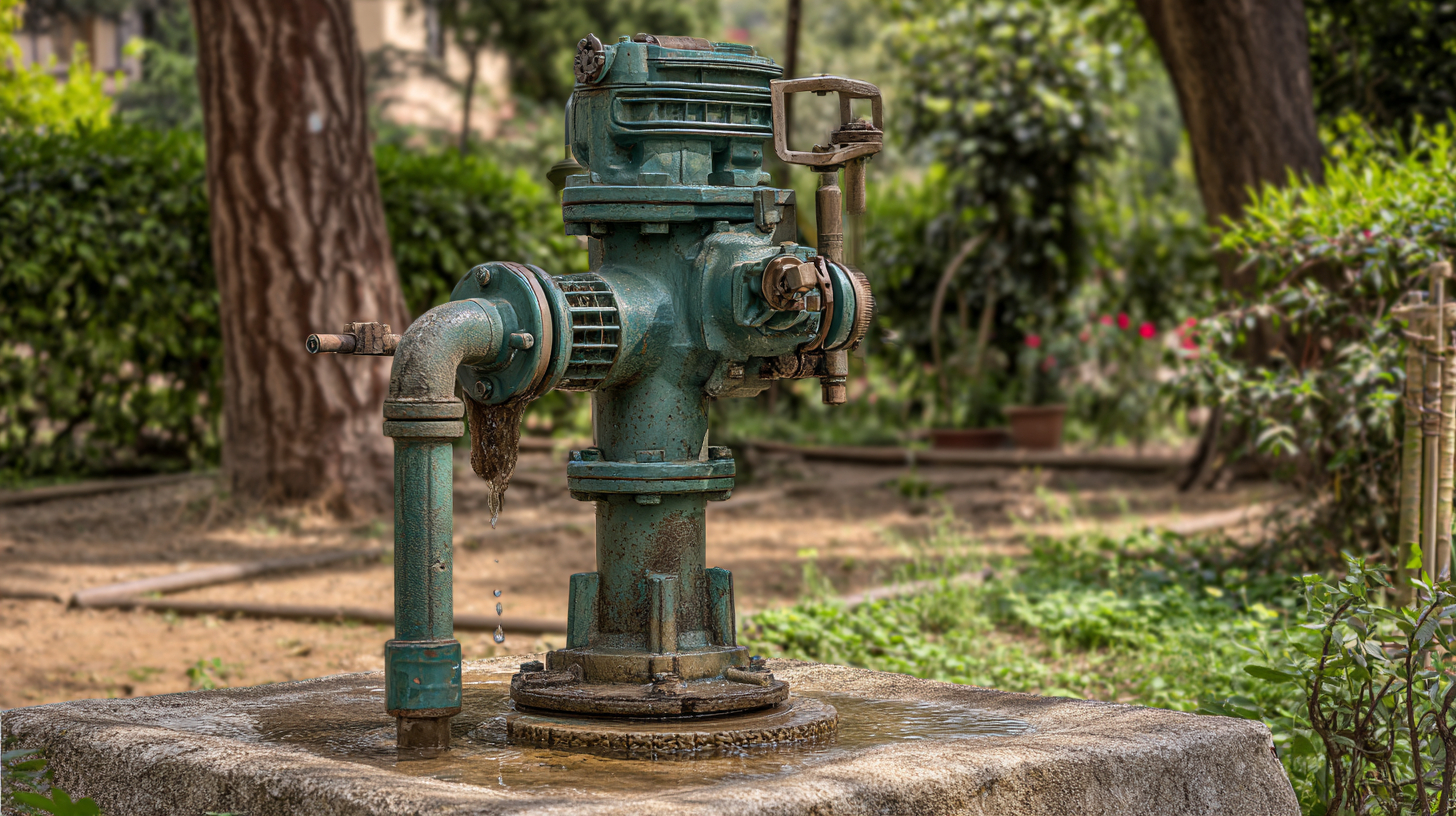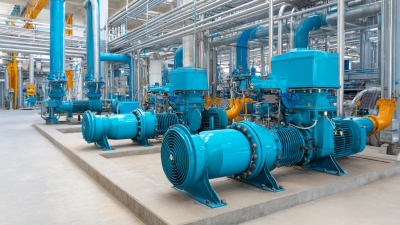How to Choose the Best Well Pump for Your Home Water Needs
When it comes to ensuring a reliable water supply for your home, choosing the right well pump is essential. Well pumps are the heart of any groundwater system, and selecting the appropriate type can significantly affect your water quality and availability. According to Peter Johnson, a leading expert in the well pump industry, "Selecting the right well pump is not just about meeting your water needs; it's about ensuring the long-term efficiency and sustainability of your water system."
Understanding the various types of well pumps and their functionalities can help homeowners make informed decisions that align with their specific water requirements. From submersible pumps to jet pumps, each type offers unique benefits and drawbacks that can influence performance and longevity. By taking the time to evaluate your household’s water needs and the characteristics of your well, you can identify which well pump will best serve your home.
In this guide, we will explore the different types of well pumps available, their features, and considerations to keep in mind while making your selection. Whether you're upgrading an existing system or installing a new well pump, understanding these factors is crucial for ensuring you choose the best option for your home's water needs.

Understanding Your Home Water Requirements
Understanding your home water requirements is crucial when selecting the best well pump. Start by assessing your household's daily water needs, which can vary according to the number of occupants and their usage habits. For instance, a family of four typically uses around 400 gallons of water per day for drinking, cooking, bathing, and laundry. Analyzing your peak usage times can help determine the flow rate you need from your well pump.
Additionally, consider the depth of your well and the water table level, as these factors influence the pump's performance. A submersible pump may be more suitable for deeper wells, while a jet pump could work well for shallow ones. It's also important to evaluate the pressure requirements for your home; higher pressure might be necessary for multi-story homes or for extensive irrigation systems. By understanding these elements, you can ensure that you choose a well pump that meets your household's unique water needs efficiently.
Types of Well Pumps: Which is Right for You?
When selecting the right well pump for your home, it’s crucial to understand the different types available and how they fit your water needs. The two primary categories are submersible pumps and jet pumps.
Submersible pumps are designed to be completely submerged in water, making them ideal for deep wells. They are highly efficient and can deliver water at a consistent pressure. If you have a deep well, a submersible pump may be your best bet, as it can handle depths of over 100 feet.
On the other hand, jet pumps are mounted above ground and are suitable for shallower wells, typically less than 25 feet deep. They work by creating a vacuum that pulls water upward, making them easier to install and maintain. However, jet pumps may struggle with water delivery if the well is too deep. When choosing between these types, consider your well’s depth, the water demand of your household, and the pump's overall efficiency. Each type offers distinct benefits, so selecting the right one will ensure you meet your home's water requirements effectively.
Top Features to Consider When Selecting a Well Pump
When selecting a well pump for your home water needs, several critical features should be taken into account to ensure optimal performance and reliability. Firstly, the pump type is essential; submersible pumps are ideal for deep wells, while jet pumps work well for shallower ones. Understanding the depth of your well and the water table level will guide you in choosing the most suitable type. Additionally, flow rate and pressure are vital factors. Consider how much water your household consumes during peak times to select a pump that can deliver sufficient pressure and volume without strain.
Energy efficiency is another significant feature to ponder. Opting for pumps with higher energy ratings can save on electricity costs and reduce your environmental footprint. Moreover, durability and material quality should not be overlooked. Pumps made from stainless steel or thermoplastic are typically more resilient against corrosion and can withstand various conditions. Lastly, consider the ease of installation and maintenance, as some models come with user-friendly features or require specific tools that could add to overall costs. Investing time in understanding these features will ultimately lead to a well pump that meets your home’s water demands effectively.
How to Choose the Best Well Pump for Your Home Water Needs - Top Features to Consider When Selecting a Well Pump
| Feature | Description | Importance | Recommended Value |
|---|---|---|---|
| Pump Type | Choose between submersible and jet pumps based on water depth. | High | Submersible for deep wells, Jet for shallow wells |
| Flow Rate | Measured in gallons per minute (GPM), determines water supply capability. | Very High | 5-25 GPM based on household needs |
| Pump Depth | Depth of the water source which the pump can efficiently reach. | High | Consider well depth plus a safety margin |
| Energy Efficiency | Select pumps with high-efficiency ratings to reduce energy costs. | High | Look for Energy Star certified models |
| Durability | Materials and design determine the pump's lifespan and resistance to corrosion. | Medium | Stainless steel or thermoplastic body |
| Noise Level | Operational noise can affect comfort, especially in residential areas. | Medium | Look for quiet operation ratings |
Comparing Efficiency and Performance Ratings
When selecting the best well pump for your home's water needs, efficiency and performance ratings are crucial in determining the right fit. Pumps are ranked based on various metrics, including flow rate, power consumption, and durability, which help homeowners assess their long-term operational costs. Understanding these ratings allows consumers to make informed choices that not only align with their immediate requirements but also support sustainability and energy efficiency.
In recent technological advancements, especially in the realm of AI and processing efficiency, there is a growing emphasis on performance alongside cost-effectiveness. Just as in the evaluation of well pumps, where comparing power usage against output can lead to significant savings, selecting a well pump should involve scrutinizing both its capacity and efficiency. Innovations in pumping technology now enable options that provide better performance with lower energy requirements, enhancing their suitability for modern home water systems. With a careful analysis of efficiency and performance ratings, homeowners can ensure they choose a well pump that meets their needs without compromising on energy efficiency.

Budgeting for Your Well Pump Purchase and Installation
When budgeting for your well pump purchase and installation, it's essential to consider several key factors to avoid unexpected expenses. Start by determining your water needs based on your household size, lifestyle, and peak usage times, as this will influence the type and capacity of the pump you should select. Research the price range for different pumps, keeping in mind that the initial cost may vary significantly based on brand, features, and efficiency.

In addition to the pump itself, installation costs can add up, so it's wise to obtain quotes from multiple professionals. Factors such as the depth of your well, accessibility, and necessary permits will affect labor costs. Make sure to allocate a portion of your budget for maintenance and potential repairs in the future, ensuring that your investment remains sound over time. By planning carefully, you can select a well pump that meets your needs without breaking the bank.
Related Posts
-

Understanding the Essential Role of Lab Pumps in Modern Scientific Research
-

Understanding the Importance of Transfer Pumps in Everyday Life: A Complete Guide
-

Exploring the Benefits of Food Pumps for Efficient Culinary Experiences
-

Revolutionizing Pump Systems with IoT Integration for Enhanced Efficiency and Performance
-

Understanding the Benefits of a Food Pump for Home Cooking Efficiency
-

Understanding the Benefits of Motor Driven Diaphragm Pumps in Industrial Applications
